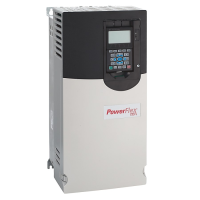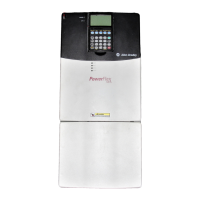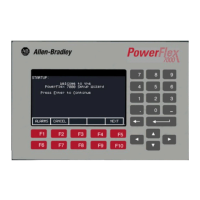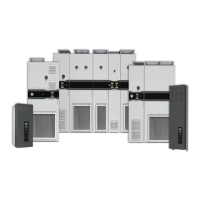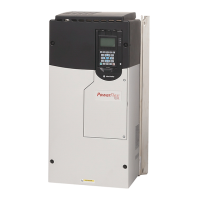2-10 Determining Dynamic Brake Requirements
This was known because the drive is rated at 480 Volts rms. If the drive
were rated 230 Volts rms, then V
d
= 395 Volts.
All of the preceding data and calculations were made from knowledge of
the application under consideration. The total inertia was given and did
not need further calculations as outlined in Step 2
.
Note that this is 8.1% of rated power and is less than the maximum drive
limit of 150% current limit. This calculation is the result of Step 3
and
determines the peak power that must be dissipated by the Dynamic
Brake Resistor.
This is the result of calculating the average power dissipation as outlined
in Step 5
. Verify that the sum of the power ratings of the Dynamic Brake
Resistors chosen in Step 4 is greater than the value calculated in Step 5.
For an internal resistor, refer to Table A.A to determine the continuous
power rating of the resistor in the given drive you are using. Skip this
calculation if an external dynamic brake resistor will be used.
In this case, a 10 HP PowerFlex 70 drive has an internal resistor rated for
40 continuous watts. Because P
av
= 114.1 watts, and is greater than the
resistor’s continuous watts rating, the drive will eventually trip on a
Resistor Over Heated fault. Calculate the minimum cycle time (in
seconds) using the formula in Section
3, number 2 B.
Recalculate the average power dissipation.
V
d
790 Volts=
Peak Braking Power P
b
J
T
ω
b
ω
b
ω
o
–()[]
t
3
t
2
–()
----------------------------------------==
P
b
0.261 186.92 186.92 0–()[]
15
------------------------------------------------------------- 608.6 watts==
Average Braking Power P
av
t
3
t
2
–()
t
4
------------------
P
b
2
-----
ω
b
ω
o
+()
ω
b
------------------------
==
P
av
15
40
-----
608.6
2
------------
186.92 0+
186.92
------------------------
114.1 watts==
608.6
2
------------
15×
40
----------------------------- 114.1 seconds=
P
av
15
114.1
------------
608.6
2
------------
186.92 0+
186.92
------------------------
40 watts==
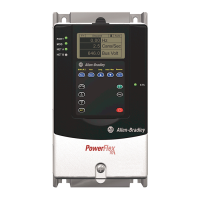
